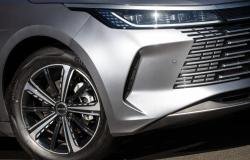
The Bugatti Veyron is one of the most important cars of recent decades. It is an engineer’s dream, the triumph of technique over the laws of physics. The search for excellence. This project was personally promoted by Ferdinand Piëch as head of the Volkswagen Group. And curiously, Its 407 km/h top speed is not a coincidence. Depending on who you ask, they are the finishing touch to a meteoric professional career… or calculated revenge, served exceptionally cold. Cold decades.
To understand Ferdinand Piëch’s motivation we must return to his origins. In the late 1960s and early 1970s, a young Piëch completely relaunched Porsche’s racing programs, leading the development of the 917. The Porsche 917s became an overwhelming success, winning all the competitions in which they participated – including the 24 Hours of Le Mans – and it could be said that they began a new era in top-level endurance competitions. Despite his success, Piëch was fired from Porsche.
The story of Ferdinand Piëch is that of a ruthless and authoritarian engineering genius
The German engineer’s family tree had close ties to the Porsche family, in fact, his mother’s maiden name was Porsche. And that was a problem: to cut off the terrible internal power struggles in the company, in which many managers had the surname Porsche and family ties, Ferdinand Porsche decided to prohibit his relatives from holding management positions. Ferdinand Piëch set up his own engineering consulting company, and continued his career at Mercedes, Audi, and years later, at the Volkswagen Group.
But in light of events, Porsche’s dismissal must have caused him great resentment. His calculating, demanding and authoritarian personality made him plan cold revenge. Or perhaps, more than revenge, a helping of “because I’m worth it.” In the 24 Hours of Le Mans, the Porsche 917 managed to achieve a maximum speed of 406 km/h on the Hunaudières straight. Years later, at the end of the eighties, that record was snatched from Porsche by the Peugeot WM P88, by a single kilometer/hour. Safely, Piëch’s ego wanted to recover that record.
By exceeding 391 km/h, Bugatti would have already surpassed the McLaren F1 record. But the McLaren was irrelevant for Piëch

To avenge his prodigal son, the Porsche 917, he set the engineering team that developed the Veyron the goal of reaching 407 km/h. Knowing the implacable personality of Ferdinand Piëch and his leadership style, there is no doubt: The goal of equaling the Peugeot record with a street car was personal.. And completely true: it is mentioned on multiple occasions and even in recent press releases from Bugatti itself. “The Veyron had to have more than 1,000 HP, go from 0 to 100 km/h in less than 3 seconds and exceed 406 km/h.”
Photos of the Bugatti Veyron
Photo of – That the Bugatti Veyron reached 407 km/h was not a coincidence, but rather a cold and calculated personal revenge
×





